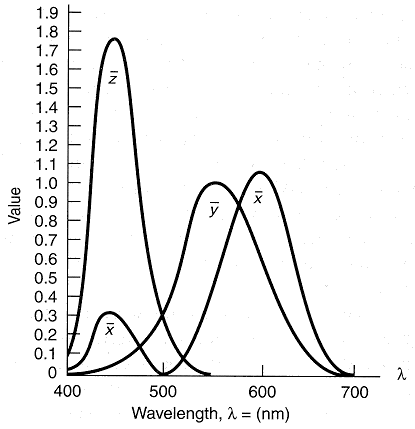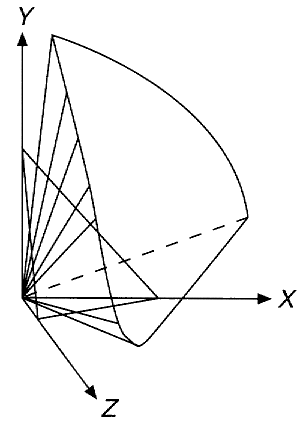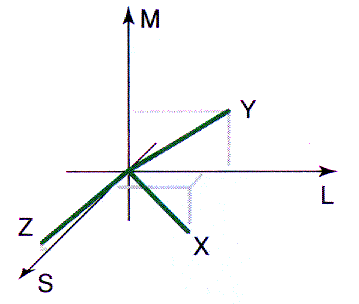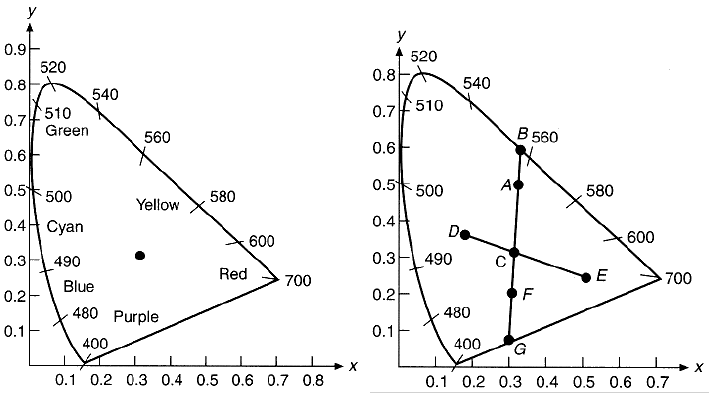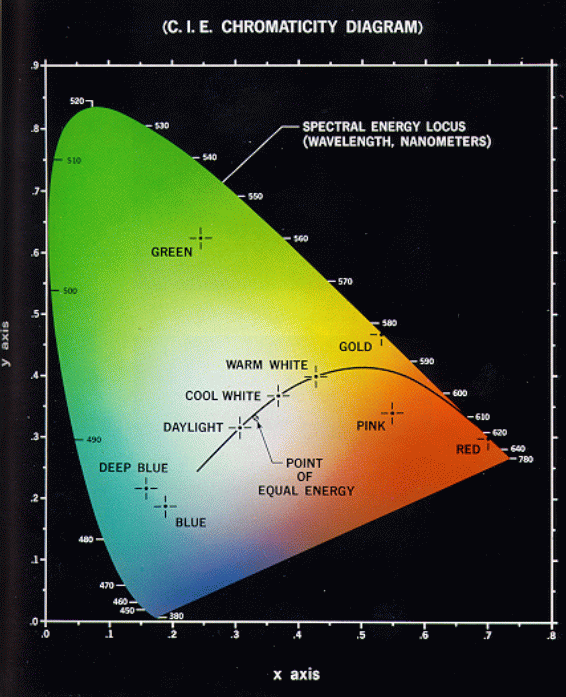CIE developed a set of three hypothetical (unreal, imaginary) primaries
X, Y, and Z in order to be able to match any color ![]() by mixing these primaries with positive weights
by mixing these primaries with positive weights ![]() ,
, ![]() and
and ![]() .
This means that in the color space the three axes of X, Y and Z must lie outside
the conical solid first discussed in the LMS coordinate system. (Or, equivalently
the conical solid must lie entirely inside the positive octant of the XYZ coordinate
system.) The XYZ primaries are not real because they cannot be physically realized.
Otherwise some ``colors'' outside the conical solid might be produced by mixing the
XYZ primaries with certain (positive) weights, a result directly contradicting the
fact that all colors we can possibly see are inside the conical solid.
.
This means that in the color space the three axes of X, Y and Z must lie outside
the conical solid first discussed in the LMS coordinate system. (Or, equivalently
the conical solid must lie entirely inside the positive octant of the XYZ coordinate
system.) The XYZ primaries are not real because they cannot be physically realized.
Otherwise some ``colors'' outside the conical solid might be produced by mixing the
XYZ primaries with certain (positive) weights, a result directly contradicting the
fact that all colors we can possibly see are inside the conical solid.
The tristimulus spectral matching curves for these XYZ primaries are shown in the figure, and indeed they are always positive for the entire range of visible wavelengths (and therefore all linear combinations thereof).
The chromaticity values of a color is defined by its weights for the three
primaries normalized by the total energy ![]() :
:
All visible colors are represented by the points inside an enclosed area in the
![]() plane. And the chromaticity diagram is the projection of this enclosed
area on
plane. And the chromaticity diagram is the projection of this enclosed
area on ![]() plane.
plane.
